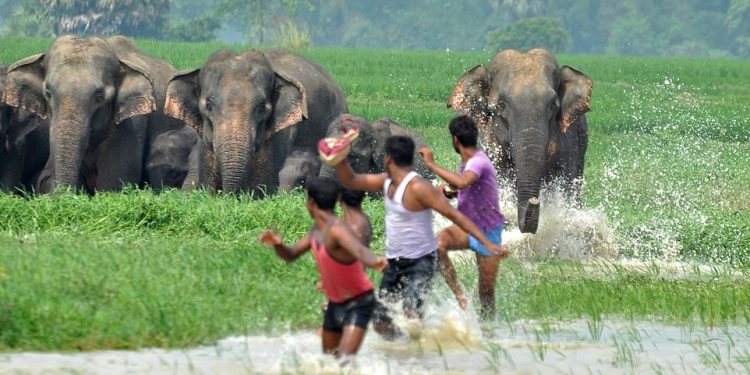Bhubaneswar: Human-elephant conflict in Odisha is worsening, forcing villagers in forest fringe areas to spend nights on makeshift treetop platforms to evade rampaging herds. With elephant corridors shrinking under the impact of mining, industrialisation, infrastructure projects and other human activities, incursions into settlements have become a daily occurrence.
Of Odisha’s 30 districts, 26 have elephant presence, with frequent depredation putting lives and property at risk in villages bordering elephant habitats. As dusk falls in these conflict zones, villagers retreat to temporary scaffold structures, climbing up ladders to spend the night in safety.
The elephant menace is growing more alarming by the day, making life in kutcha houses fraught with danger. Though such incidents may appear sporadic, they highlight the severity of depredation unleashed by marauding elephants, exposing the helplessness of humans against the might of these animals.
Also Read: Woman killed as tusker attacks auto-rickshaw
Odisha, home to 2,098 elephants, has struggled to preserve their natural habitats. The resulting loss of forest cover has driven the animals into villages, where they trample crops and attack humans almost at will.
With habitats shrinking, elephants wander into villages in search of food. Even protected parks and sanctuaries— once safe corridors for the animals—are under pressure from encroachment, as people settle, forage, and graze cattle in forest areas.
“Such human interference is fueling frequent man-elephant confrontations,” noted conservationist Biswajit Mohanty.
In 1979, there were 2044 elephants mostly confined to rich forested districts like Mayurbhanj, Keonjhar, Sambalpur, Angul, Sundargarh and Cuttack.
Today, after almost five decades, their number is stagnant though the elephants have scattered to 24 districts. The elephants originally from neighbouring Jharkhand and West Bengal, are also migrating to Odisha at periodic intervals compounding the man-elephant conflict.
“It has become a risky proposition to stay in the house after sunset. The rampaging elephants are entering villages and destroying dwelling units at will. So we are climbing atop the tall trees with our families. Wooden frames erected in tree branches have become nocturnal homes,” said locals of Banshapala village under Bhuvan & Juanga Pirh (BJP) forest range in Keonjhar district.
With the forest department doing precious little to ensure their lives’ safety, the locals have applied their rustic wisdom to save themselves from being gored to death by jumbos.
If forest officials are to be believed, elephants are attracted by mango trees, vegetable plants, and banana plantations to stray into the villages.
During day hours, the elephants’ movement is confined within the forest while they stride their way into forest-side villages after sunset, said forest officials.
The skilled service group of elephant chasers and the Global Positioning System (GPS) tracking teams are on the job to ensure the safety of life and property of villagers living along the forest-side areas, added forest officials.
Agencies






































